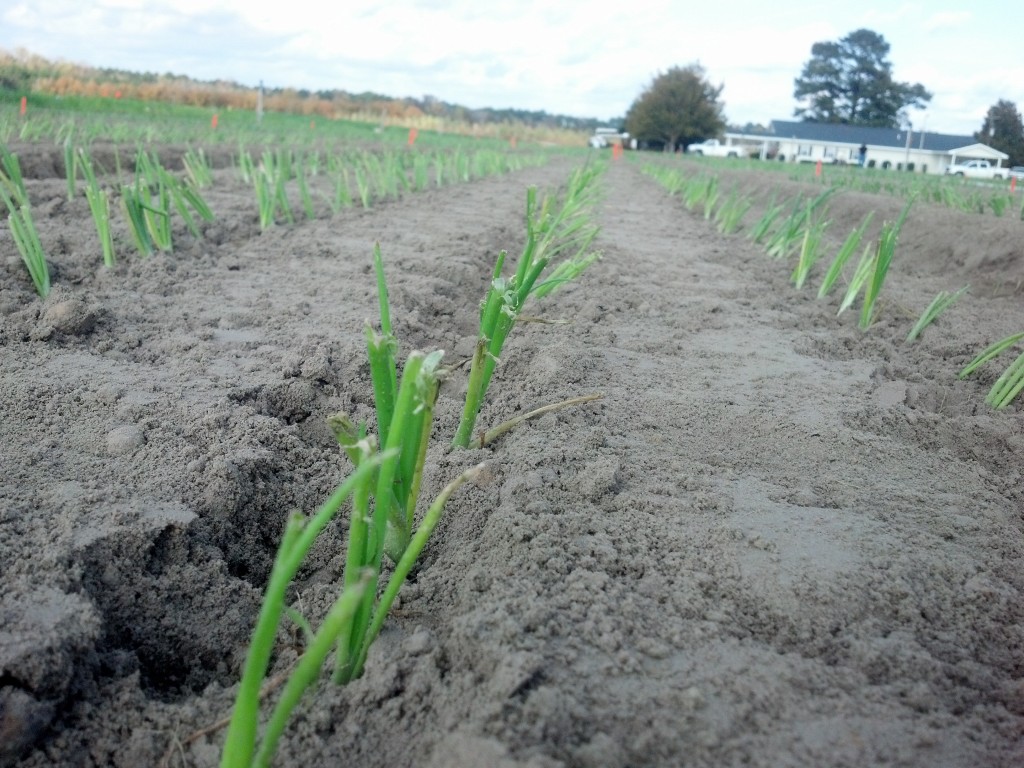Many people enjoy growing fruits and vegetables in their backyard. Blueberries are a commonly planted backyard fruit crop that can be successfully grown in South Georgia with limited trouble from pests and diseases. Recently, I wrote about planting blueberry bushes and this week I wanted to write about caring for established blueberry bushes.
When growing any crop, the condition of the soil plays an extremely large role in the success of the crop. Knowing the condition of your soil and managing it accordingly will help you to be successful in growing blueberries. Testing the soil that your blueberries are growing will tell you the soil pH and nutrient levels. Blueberries grow best in acidic soil that has a pH between 4.5 and 5.2. Periodic soil testing should be done to monitor soil pH and nutrient levels. If you take a soil test and find that you need to adjust the pH or are severely deficient in a particular nutrient you will be able to take actions to correct the problem. Another benefit of soil testing is that the soil test results will include recommendations about what you should add to the soil and when you should add it in order to adjust it to where it needs to be.
During the second year of growth a greater amount of fertilizer will need to be applied than was in year one. One approach to fertilizing your plants is to apply two ounces of 10-10-10, or a similar fertilizer, per plant in both March and July of the second growing season. Two tablespoons of 10-10-10 fertilizer is approximately one ounce, so you would need to apply four tablespoons of 10-10-10 to put out 2 ounces. Using a “premium” fertilizer that includes secondary and micronutrients such as calcium, magnesium, sulfur, boron, manganese, zinc, and possibly others would be better than standard fertilizer that contains nothing more than nitrogen, phosphorus, and potassium. Make sure to spread the fertilizer out evenly in a circle that has a diameter of 24 inches around the plant and be careful not to apply an excessive amount of fertilizer.
During the third and subsequent years of growth you would need to apply one ounce of 10-10-10, or similar fertilizer per foot of plant height up to a maximum of six ounces per plant at certain times in the season. Applications would be made at bud-break in spring and after harvest in summer.
Rabbiteye blueberry bushes will need to be pruned in order to maintain optimal production. When the bushes reach 4-6 feet high a cane renewal pruning program will need to be started. When the bushes are the proper size, 1-3 of the largest canes will need to be removed at 0-24 inches from ground level. This should amount to about twenty percent of the canopy. New canes that are more productive will sprout from old canes or from below ground level. Pruning about twenty percent of the bush each year will result in the whole bush being renewed over a five year period and will help the plant to be more fruitful.
Make sure to keep the weeds controlled around the plants. Mulching with pine-straw or pine-bark can help control weeds and retain soil-moisture. Also, if you can, make sure to water your plants. One option for irrigation would be to use a soaker hose. Another option for irrigating your plants would be build a drip irrigation system. A small scale drip irrigation system can be constructed fairly easily and could potentially make irrigating easier for you. If you have any questions you can call you county extension office at 557-6724.

